Discovering that a beloved jumpsuit is too small can be disheartening, but fear not, for you can transform it into a flattering and comfortable outfit with a bit of creativity and sewing finesse.
Altering a jumpsuit to fit you perfectly is a satisfying DIY endeavor that allows you to breathe new life into your wardrobe or make the most of a thrift store find.
This step-by-step guide will take you through the process, from assessing the fit and gathering the necessary supplies to making precise alterations and adding stylish touches.
Whether you’re a seasoned seamstress or a novice with a sewing machine, this guide will empower you to resize your jumpsuit and bring it back to life, ensuring a tailored fit that boosts your confidence.
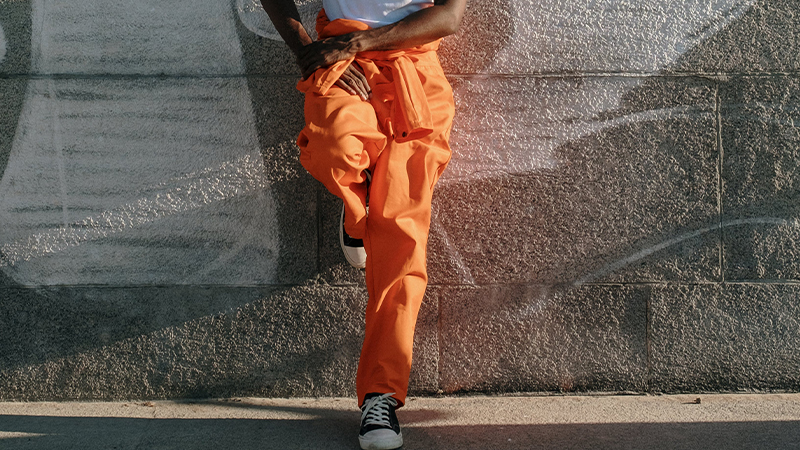
How to Alter a Jumpsuit That Is Too Small? 11 Steps
Altering a jumpsuit that is too small can be challenging, but it is certainly possible with the right tools, techniques, and patience.
Here’s a step-by-step guide to help you alter a jumpsuit to fit you better:
Step 1: Assess the Fit
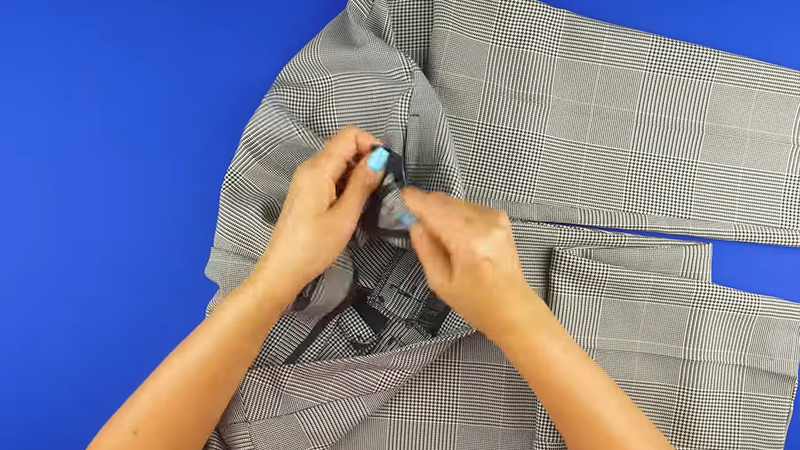
Begin by putting on the jumpsuit and noting areas where it feels tight or restrictive. Pay attention to the bust, waist, hips, and length. This initial assessment is crucial as it will guide you in identifying which areas need adjustment.
Step 2: Gather Your Supplies
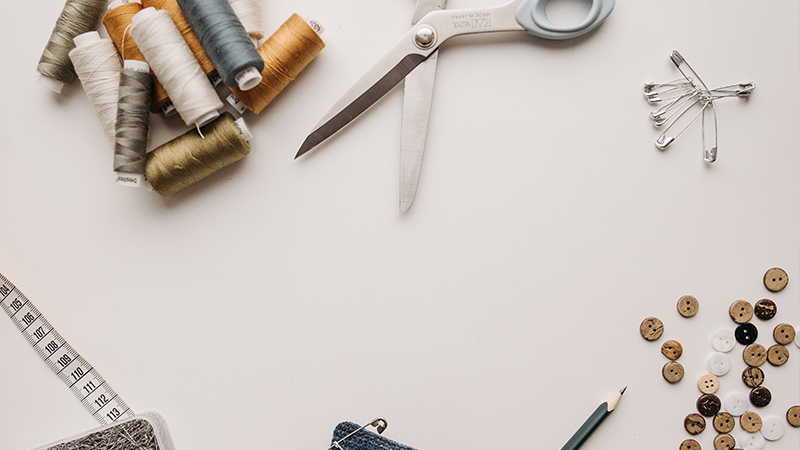
Before diving into the alterations, ensure you have all the necessary tools and materials. These include a sewing machine or needle and thread, scissors, pins, a seam ripper, measuring tape, matching fabric, and an iron.
A well-lit workspace is also essential for precision.
Step 3: Remove Existing Stitches (if Necessary)
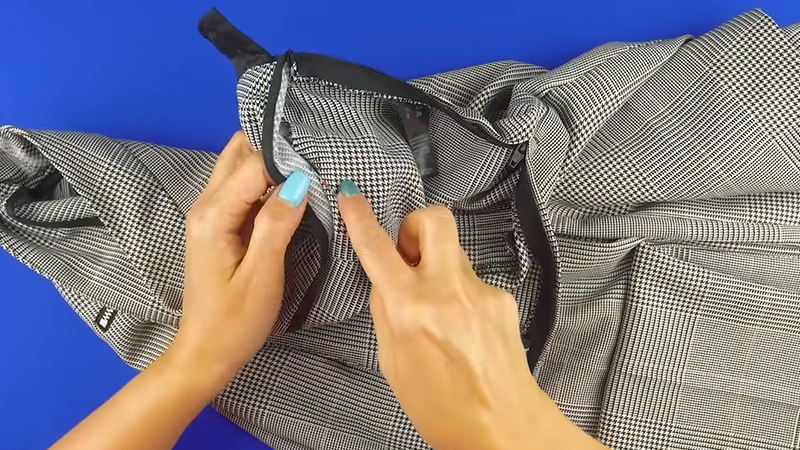
Inspect your jumpsuit for existing seams that can be let out to create more room. Use a seam ripper to undo these stitches carefully. Be cautious to avoid damaging the fabric during this process.
Step 4: Add Extra Fabric (if Needed)
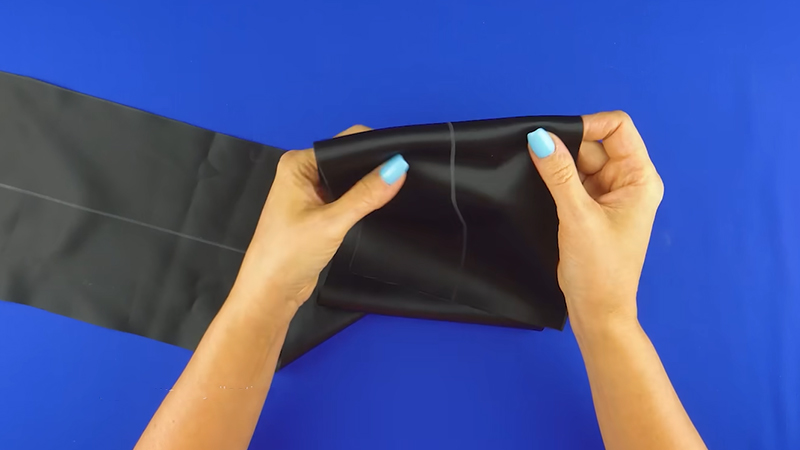
In cases where there isn’t enough fabric to let out, you’ll need to add extra material. Select a fabric that matches the jumpsuit in color and texture.
Cut fabric panels or inserts to the required size and shape and pin them to the jumpsuit. Ensure that the added fabric seamlessly blends with the original design.
Step 5: Sew the Alterations
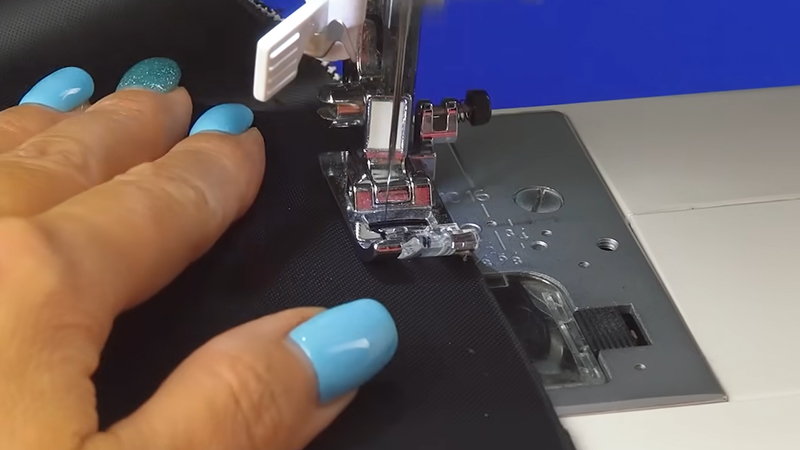
With your sewing machine or needle and thread, stitch the added fabric to the jumpsuit, following the existing seam lines as closely as possible. This will help maintain the jumpsuit’s original appearance.
Ensure your stitches are neat and secure, particularly if you’re working with multiple layers.
Step 6: Adjust the Bust (if Needed)
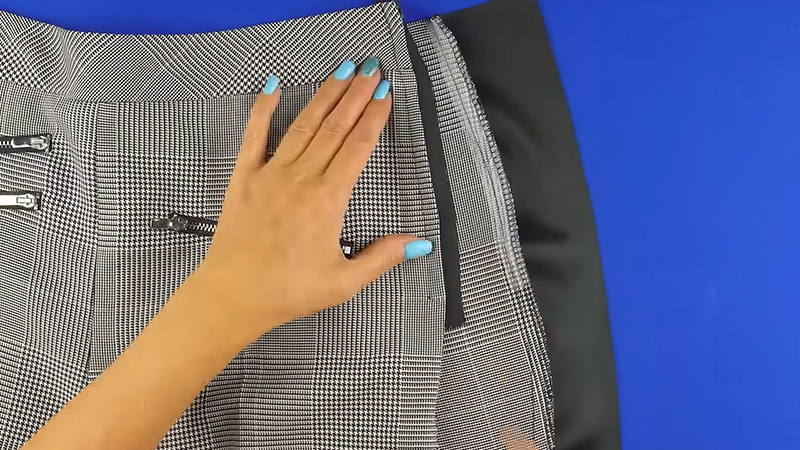
Consider adding darts, pleats, or gathers for jumpsuits that are too tight in the bust area. These modifications create extra room while preserving a flattering silhouette.
Carefully pin and sew these adjustments in place.
Step 7: Adjust the Waist (if Needed)
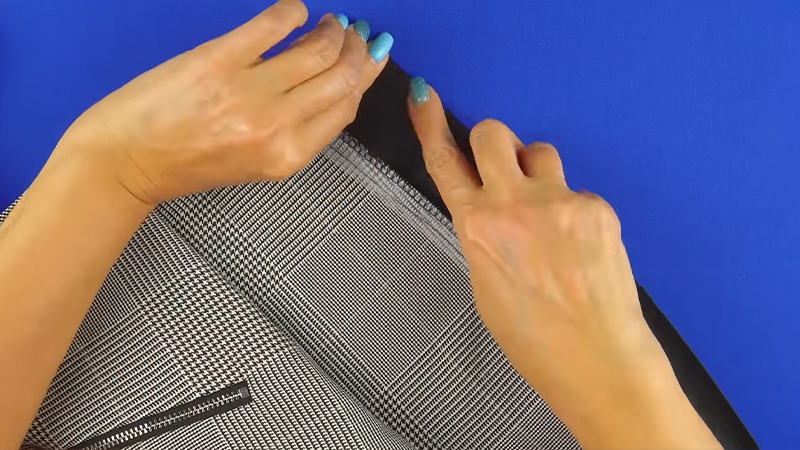
If the waist is too small, you can add a belt, sash, or ribbon to cinch it and create a defined waistline. Modify the closure by adding buttons, snaps, hooks, or eyes for a more flexible fit.
Step 8: Hem or Lengthen (if Needed)
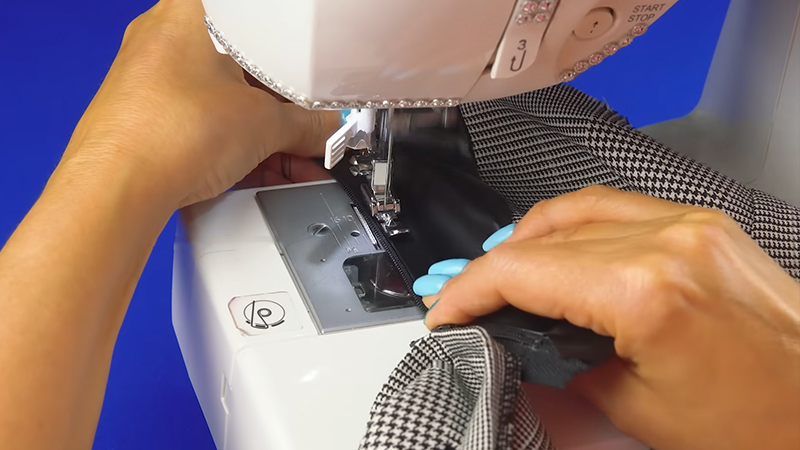
For jumpsuits that are too short, hemming to your desired length is an option. Alternatively, add cuffs or ruffles for a stylish touch. To lengthen the jumpsuit, use matching or complementary fabric at the bottom and sew it neatly.
Step 9: Make It More Stretchy (if Needed)
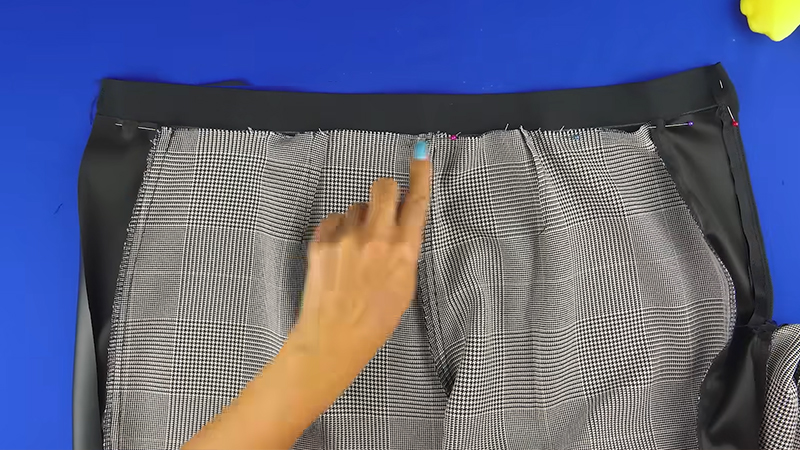
Enhance the jumpsuit’s stretchiness by adding elastic or shirring to more flexible areas. For shirring, sew parallel rows of stitches and gather the fabric by pulling the threads.
Step 10: Finishing Touches
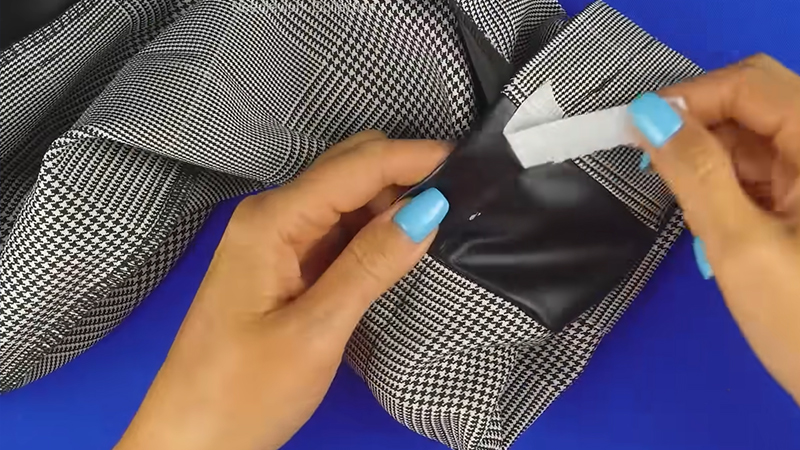
Trim any excess fabric, secure loose threads, and give the jumpsuit a final press with an iron. This step ensures a polished appearance and a professional finish.
Step 11: Try It on and Make Final Adjustments
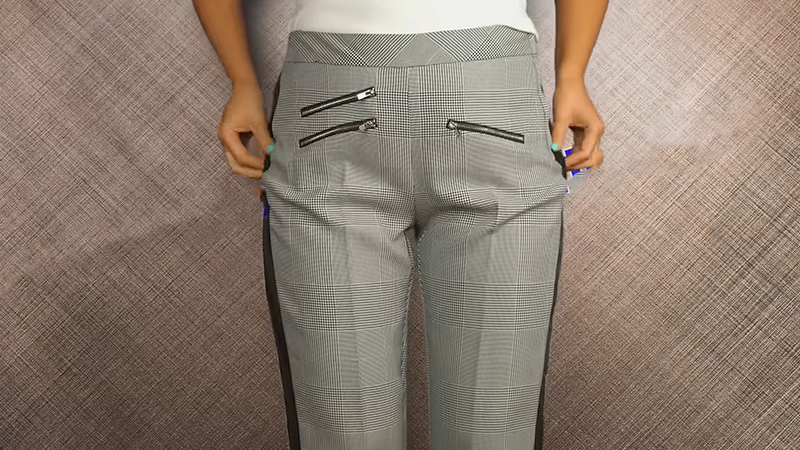
Finally, put the jumpsuit back on and assess the fit once more. Make any necessary final adjustments, such as taking in seams or fine-tuning the alterations to achieve a perfect and comfortable fit.
What is the Most Challenging Part of Altering a Jumpsuit That is Too Small?
The most challenging part of altering a too small jumpsuit can vary depending on factors like the jumpsuit’s design, the fabric used, and the individual’s sewing skills.
However, some common challenges include:
Seam Matching and Pattern Alignment
One of the most demanding aspects of altering a jumpsuit is ensuring that the added fabric or alterations seamlessly blend with the original design. This can be especially challenging when dealing with jumpsuits that have intricate patterns, prints, or detailing.
Achieving symmetry and a harmonious look requires careful attention to detail.
Delicate Fabrics
The alteration process becomes significantly more complex when a jumpsuit is made from delicate or fragile materials such as silk, lace, or chiffon.
Delicate fabrics are prone to damage, making it essential to use precise techniques and handle the material with utmost care.
Complex Closures
Jumpsuits may feature zippers, buttons, or other closures in the very areas that need adjustment. Altering around these closures can be challenging, often necessitating removing, repositioning, or replacing these elements without compromising functionality or aesthetics.
Proportional Integrity
Preserving the jumpsuit’s overall proportions and style while increasing its size is a delicate balancing act. Alterations should not make the jumpsuit appear lopsided or disjointed.
Maintaining the garment’s original aesthetic appeal can be demanding, particularly when working with intricate or asymmetrical designs.
Stretchy Fabrics
Jumpsuits crafted from stretchy fabrics require specialized handling to ensure alterations do not compromise the fabric’s elasticity. Selecting the appropriate stitching techniques and treating the material gently is vital to maintaining its stretch and comfort.
Precise Measurements
Achieving precise measurements and ensuring symmetrical alterations on both sides of the jumpsuit can be challenging, particularly for individuals who are not experienced seamstresses.
Even a slight discrepancy in measurements can result in an ill-fitting garment.
Correcting Mistakes
Mistakes can occur during the alteration process, and rectifying them without causing further damage can be daunting. Unpicking stitches, correcting errors, and salvaging the fabric are skills that require patience and expertise.
Lining and Interfacing
Many jumpsuits feature linings and interfacing, which add an extra layer of complexity to alterations. These components must be adjusted in tandem with the primary fabric to maintain the garment’s structure and integrity.
Preserving Original Details
If the jumpsuit boasts unique details like pleats, pockets, or decorative elements, the challenge lies in preserving these elements while making the necessary adjustments.
This often demands meticulous workmanship and attention to the smallest design elements.
Consistent Fit
Achieving a consistent fit throughout the jumpsuit, from top to bottom, can be a formidable task, particularly when dealing with substantial alterations.
Ensuring that the modified areas seamlessly integrate with the rest of the garment is essential for a polished appearance.
What Do You Wear Under a Short Jumpsuit?

When it comes to styling a short jumpsuit, also known as a romper, what you wear underneath plays a pivotal role in achieving the perfect look. Your choice should enhance your comfort and complement the jumpsuit’s design and the occasion.
Here are some popular options for what to wear under a short jumpsuit:
Bodysuit or Camisole
A fitted bodysuit or a camisole is a versatile choice. It provides coverage, streamlines your silhouette, and prevents any unexpected peek-a-boos. You can choose a neutral color that blends with the jumpsuit or a contrasting shade for a pop of color.
Tank Top or T-shirt
Pair your short jumpsuit with a simple tank top or T-shirt for a casual and effortless vibe. This combination is ideal for everyday wear and gives you the comfort of separates with a cohesive look.
Crop Top
To infuse some style into your outfit, consider a crop top. This trendy option allows you to show off a bit of midriff while balancing the shorter length of the jumpsuit.
Coordinate the top’s color and style with the jumpsuit for a fashionable ensemble.
Lingerie or Bralette
Consider wearing lingerie or a delicate bralette underneath if you don a sheer or lace jumpsuit. It adds a touch of sophistication and subtly enhances the jumpsuit’s allure.
Strapless Bra
Jumpsuits with low necklines or open-back designs may call for a strapless bra. A well-fitted strapless bra offers support without visible straps, maintaining a clean and polished look.
Biker Shorts or Safety Shorts
If you’re concerned about the short length of the jumpsuit riding up, especially during physical activities or windy conditions, biker shorts or safety shorts are a practical solution.
These shorts provide additional coverage and comfort.
Nothing (Depending on the Design)
Some jumpsuits are designed with built-in lining or shorts that eliminate the need for additional layers. These jumpsuits are convenient and comfortable, allowing you to go without anything underneath.
Swimwear
For a day at the beach or pool, a short jumpsuit can double as a stylish cover-up for your swimsuit. You can wear your swimwear underneath, making it easy to transition from swimming to lounging or strolling.
Does Jumpsuit Look Good on Short Height?
Yes, jumpsuits can look fantastic on individuals with shorter heights. The key is to choose the right style and fit. Opt for jumpsuits with a tailored waistline or high-waisted design to create the illusion of longer legs.
Select a monochromatic color scheme to create a streamlined look, and consider heels or wedges to add height. Avoid overly baggy or long styles that can overwhelm a petite frame.
With the right choice, jumpsuits can be a stylish and flattering choice for those with shorter heights.
FAQs
Can I alter a jumpsuit made from stretchy material?
Yes, you can. Be cautious when sewing stretchy fabric to maintain its elasticity. Use a stretch stitch or a walking foot on your sewing machine if available.
How do I ensure the added fabric matches the jumpsuit seamlessly?
Choose a fabric that closely resembles the jumpsuit’s color, texture, and pattern. Consider using remnants from the jumpsuit itself if possible.
What if my jumpsuit has a zipper in the problem area?
When altering around a zipper, consider repositioning it if possible. If not, be careful when sewing near the zipper to avoid damage.
What do you do if the jumpsuit is too short?
If a jumpsuit is too short, consider adding a complementary fabric at the bottom or wearing it as a trendy cropped style with appropriate shoes.
Can I alter a jumpsuit with a zipper that’s too short?
Extending a zipper can be challenging. Consult a professional or consider using alternative closures like buttons or snaps for added room.
To Recap
In the fashion world, there’s nothing quite like the feeling of turning an ill-fitting jumpsuit into a customized masterpiece.
This journey of alteration, as outlined in our comprehensive guide, empowers you to reclaim the style and comfort of your too-small jumpsuit.
With patience and a little sewing savvy, you can confidently address areas of snugness, adjust proportions, and even infuse your personal touch through creative enhancements.
Whether you’re a seasoned seamstress or a novice with a needle and thread, the satisfaction of seeing your jumpsuit transform into a perfectly fitting and stylish garment is immensely rewarding.
Remember, fashion is not just about what you wear but also about how you make it uniquely yours, and this alteration process embodies just that. So, don’t be discouraged by a jumpsuit that is too small. Alter it, embrace it, and rock it with newfound confidence.
Leave a Reply